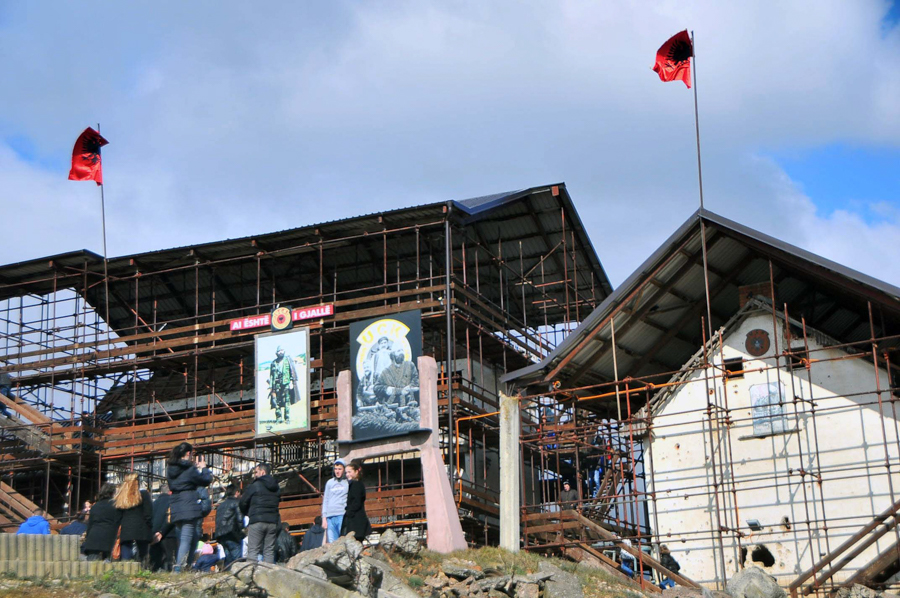
On the morning of March 5, the shots were heard around the village. Prekazi woke up from the first shots, to resist three days in a row in front of the Serbian army. The first Thursday of March 1998 marks the beginning of the war of the Kosovo Liberation Army (KLA), led by the legendary commander Adem Jashari. The Jashari neighborhood is evidence of terror against three generations of the heroic family. Surrounded by the Serbian aggressor were also residents of the surrounding villages, who barely managed to bury over 50 people killed and massacred. The former activist, Xhafer Murtezaj, tells KosovaPress about the events of those days. Also after the heroic fall, he shows that the Serbian forces were staying inside the village, whereas the inhabitants of Klina e Poshtme were mobilizing to open more than 50 graves to bury the murdered children, women and old people.
"I remember it as it was today", this is how Xhaferi begins his story, as he remembers March 5, 1998.
The inhabitants of the surrounding villages, he adds, realized that the war had started. From March 5 to 7, Xhaferi says that they were surrounded by Serbian police forces very close to the houses.
Although not far from Prekazi, he confesses that it was impossible for them to help the heroic family from the resistance village."Our houses are close, maybe somewhere 500 meters from the air line, it’s not too far. Except for the munitions factory that separates us. And we have seen them all… We have not been able to go there… Also, today I feel weak, because we were not able to help them, except that we could get killed in the courtyard or on the street. Because in front of every house, or in front of every window, there has been a target from the police", says Murtezaj further.
"We were convinced that they do not surrender alive", this is how he continues the narrative as he talks about the heroic fall of three generations.
Former activist Xhafer Murtezaj says that the 53 members of Jashari family were sent to the morgue and then handed over to the residents to bury them."On the 9th there was no one to go and bury them. On that day, the corpses (bodies) remained as they were, guarded by Nebih Ferizi and Naser Krasniqi, who also had a brother killed at the same time. On the 10th in the morning, Ajnishahja arrived, to be honest, we still didn't dare to go out. Because as I said whoever came out was targeted and killed. Ajnishahja has arrived, and they (Serbs) have told us that 'if you don't bury them today, we will bury them by force'. And they took the excavator, they took the truck, the special team came to bury them…", he continues his story.
Prekazi was surrounded by Serbian police forces, whereas Xhaferi shows how they were mobilized to open the graves for all those killed. At the entrance to the village, he adds that he managed to identify the body of Hami Jashari and his wife, Sala, who had been guarding the soldiers for several years.
Emotionally, he recounts the four difficult days after March 7 until the funeral ceremony. He shows that they had decided to bury the bodies of over 50 killed in the "Field of Reconciliation", where blood reconciliation used to take place. The funeral was postponed until the next day, due to the lack of media coverage."There were people, but not many, two or three people opening a grave. We opened 56 graves. Zekirja Cana came and told me 'Xhevat, we are not burying them today because no media could come'. And we want to give them a more dignified burial. And we decided that way, we told the people, ‘Go away, because we are not burying them today'", says Murtezaj.
He will hardly forget the sight of the village of Prekaz, almost burnt to ashes. On the 11th, four days after the end of the fighting, they managed to bury all the killed and massacred bodies, while almost nothing could be seen in the entire village except for the smoke.
On March 5, 6 and 7, over 50 people were killed in the village of Prekaz, among them children, women, and elderly. /Sh. Pajaziti
